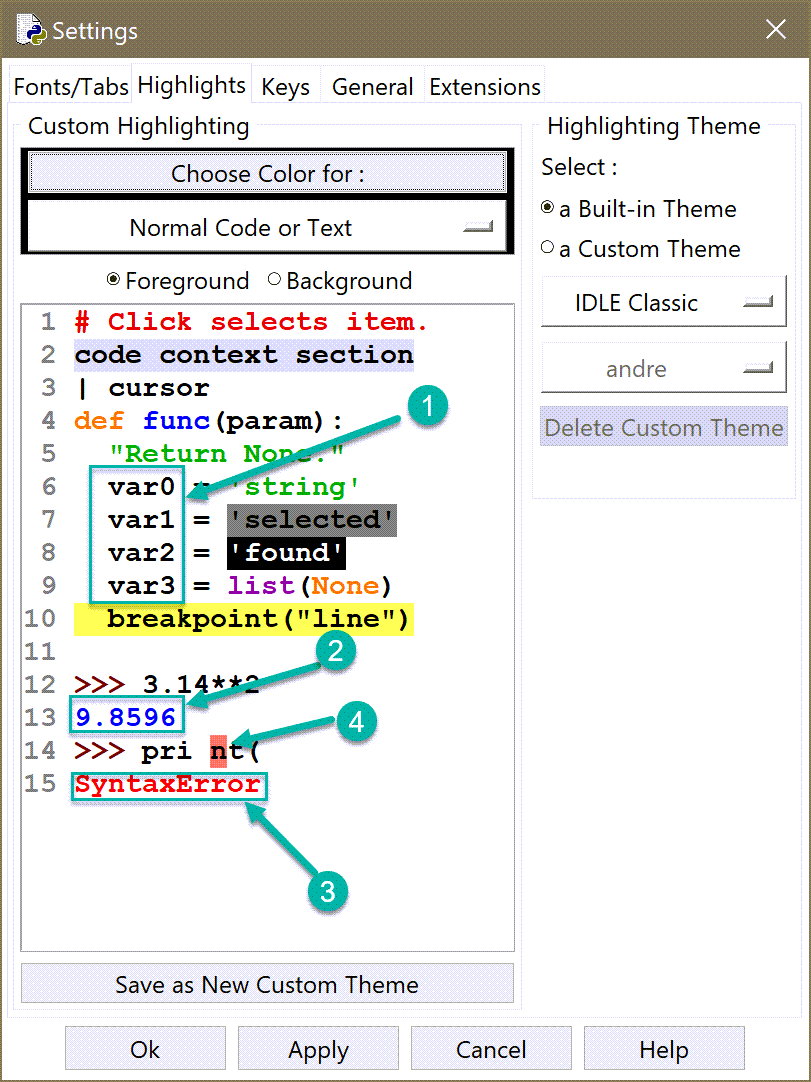Warning
This project is being split into 3 separate projects:
friendly_traceback,friendly, andfriendly_idle.
The documentation does not reflect this change.
If you are a end-user, just install friendly until further notice.
About IDLE¶
IDLE is often the first program that is used by beginners learning Python since it is installed with Python. It includes its own REPL (known as its “shell”) and enable users to write code in editors and run them, with the output redirected to the shell.
Before Python version 3.10.0a5, IDLE did not allow a user to define their own “exception hook” to modify the information shown to a user. Since then, it is possible to have IDLE use a custom exception hook except when dealing with syntax errors. To get the most out of friendly, I recommend to use friendly’s own console instead of IDLE’s shell as described on the next page.
Colours¶
In most other programs where colour output is possible, friendly uses pygments, either directly or indirectly to add colour. This is not possible when using IDLE.
Idle provides a few pre-defined element types to which colouring can be applied.

In the default scheme:
The default colour is black.
Anything “printed” normally (
print() --> sys.stdout) is in blue.Anything printed following an exception (sent to
sys.stderr) is in red.IDLE uses a red background to highlight a specific position of a syntax error as identified by Python.
Friendly makes use of the colours chosen for these four basic elements when it formats the information presented to the user. The specific colour used for each of these cases can be changed by according to your preferences.